 | TODAY IN SCIENCE HISTORY
NEWSLETTER - 24 SEPTEMBER |
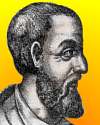 On 24 Sep 1501, Girolamo Cardano was born, an Italian physician, mathematician, and astrologer who was the first to give a clinical description of typhus fever. His book, Ars magna (“Great Art,” 1545) was one of the great achievements in the history of algebra. His mechanical inventions included a combination lock, a compass gimbal and a universal joint. On 24 Sep 1501, Girolamo Cardano was born, an Italian physician, mathematician, and astrologer who was the first to give a clinical description of typhus fever. His book, Ars magna (“Great Art,” 1545) was one of the great achievements in the history of algebra. His mechanical inventions included a combination lock, a compass gimbal and a universal joint. A book-length biography was written by Henry Morley, who also contributed a magazine article on the life of Girolamo Cardano to The Gentleman's Magazine in the same year (1854). His article is a verbose exposition of the personal life of Cardarno, titled Jerome Cardan. |
 On 24 Sep 1898, Howard Florey was born, who developed the wonder drug penicillin after Fleming's discovery. Today's Science Store pick is: The Mold in Dr. Florey's Coat: The Story of the Penicillin Miracle, by Eric Lax The title comes from Florey's wartime plan to smuggle spores on his coat if escape was necessary after an invasion. A fascinating story of quirky individuals, conflicts, missed opportunities, medical prejudice, brilliant science, shoestring research and wartime pressures. Due recognition for Florey's vital contribution to inventing an industrial scale manufacturing process for pencicillin is given in this book. It is available New from $7.64. Used from $0.01. (As of time of writing.). On 24 Sep 1898, Howard Florey was born, who developed the wonder drug penicillin after Fleming's discovery. Today's Science Store pick is: The Mold in Dr. Florey's Coat: The Story of the Penicillin Miracle, by Eric Lax The title comes from Florey's wartime plan to smuggle spores on his coat if escape was necessary after an invasion. A fascinating story of quirky individuals, conflicts, missed opportunities, medical prejudice, brilliant science, shoestring research and wartime pressures. Due recognition for Florey's vital contribution to inventing an industrial scale manufacturing process for pencicillin is given in this book. It is available New from $7.64. Used from $0.01. (As of time of writing.).
For picks from earlier newsletters, see the Today in Science Science Store home page.
| |
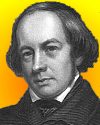 | To produce any given motion, to spin a certain weight of cotton, or weave any quantity of linen, there is required steam; to produce the steam, fuel; and thus the price of fuel regulates effectively the cost of mechanical power. Abundance and cheapness of fuel are hence main ingredients in industrial success. It is for this reason that in England the active manufacturing districts mark, almost with geological accuracy, the limits of the coal fields. - Robert John Kane, Irish chemist (born 24 Sep 1809).  |
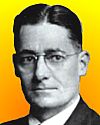 | It is the technologist who is transforming at least the outward trappings of modern civilization and no hard and fast line can or should be drawn between those who apply science, and in the process make discoveries, and those who pursue what is sometimes called basic science. - Sir Howard Walter Florey, Australian-English pathologist (born 24 Sep 1898).  |
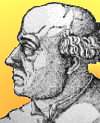 | Every creature has its own food, and an appropriate alchemist with the task of dividing it ... The alchemist takes the food and changes it into a tincture which he sends through the body to become blood and flesh. This alchemist dwells in the stomach where he cooks and works. The man eats a piece of meat, in which is both bad and good. When the meat reaches the stomach, there is the alchemist who divides it. What does not belong to health he casts away to a special place, and sends the good wherever it is needed. That is the Creator's decree... That is the virtue and power of the alchemist in man. - Philippus Aureolus Paracelsus, German-Swiss physician and alchemist (died 24 Sep 1541).  |
| Before you look at today's web page, see if you can answer some of these questions about the events that happened on this day. Some of the names are very familiar. Others will likely stump you. Tickle your curiosity with these questions, then check your answers on today's web page. |
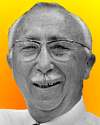 | Pol Swings, born 24 Sep 1906, was a Belgian astrophysicist who made spectroscopic studies to identify elements and structure of stars and comets. He discovered the first interstellar molecule, a radical (1937).
 What two elements were in the radical he discovered in 1937? |
| Georges Claude, born 24 Sep 1870, was a French engineer, chemist, and inventor of a still-used form of light, which he first publicly displayed on 11 Dec 1910 in Paris.
 What was the form of light he invented? |
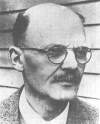 | A German physicist (1882-1945) introduced the first successful detector of individual alpha particles and other ionizing radiations. This scientist later investigated cosmic rays, artificial radioactivity, and nuclear fission.
 Can you name this scientist? |
 | On 24 Sep of a certain year, the first nuclear-powered aircraft carrier, the USS Enterprise, in Newport, Virginia. Powered by eight nuclear reactors, it does not need to carry its own fuel oil and so has more room for aviation fuel and weapons.
 In which decade did this occur? |
 | On 24 Sep 1852, a new invention, the dirigible - a semi-rigid airship - was demonstrated in a flight from Paris to Trappe. Henri Giffard (1825-82) designed in the gondola of a 147-foot-long spindle shaped coal-gas balloon. An 11 ft propeller produced a speed of 5 mph on a 3 hour trip. This was the first powered and controlled flight ever achieved.
 What form of power turned the propeller? |
When you have your answers ready to all the questions above, you'll find all the information to check them, and more, on the September 24 web page of Today in Science History. Or, try this link first for just the brief answers.
Fast answers for the previous newsletter for September 23: spark plug and magneto • Armand-Hippolyte-Louis Fizeau • Sigmund Freud • the decade containing the year 1846 • BBC. |
 If you enjoy this newsletter, the website, or wish to offer encouragement or ideas, please send feedback by using your mail reader Reply button. If you enjoy this newsletter, the website, or wish to offer encouragement or ideas, please send feedback by using your mail reader Reply button.
Your click on a StumbleUpon, Google+ or Facebook social button on the site webpages is also a welcome sign of appreciation. Thank you for using them. |
To find citations for quotations go to the corresponding webpage by clicking on the “quotes” balloon icon. Sources for the thumbnails appear on today's webpage with the corresponding item.
� This newsletter is copyright 2013 by todayinsci.com. Please respect the Webmaster's wishes and do not put copies online of the Newsletter � or any Today in Science History webpage. (If you already have done so, please remove them. Thank you.) Offline use in education is encouraged such as a printout on a bulletin board, or projected for classroom viewing. Online, descriptive links to our pages are welcomed, as these will provide a reader with the most recent revisions, additions and/or corrections of a webpage. For any other copyright questions, please contact the Webmaster by using your mail reader Reply button. |
--
If you do not want to receive any more newsletters,
Unsubscribe To update your preferences and to unsubscribe visit
this link 


 On 24 Sep 1501, Girolamo Cardano was born, an Italian physician, mathematician, and astrologer who was the first to give a clinical description of typhus fever. His book, Ars magna (“Great Art,” 1545) was one of the great achievements in the history of algebra. His mechanical inventions included a combination lock, a compass gimbal and a universal joint.
On 24 Sep 1501, Girolamo Cardano was born, an Italian physician, mathematician, and astrologer who was the first to give a clinical description of typhus fever. His book, Ars magna (“Great Art,” 1545) was one of the great achievements in the history of algebra. His mechanical inventions included a combination lock, a compass gimbal and a universal joint. 



 What two elements were in the radical he discovered in 1937?
What two elements were in the radical he discovered in 1937?  What was the form of light he invented?
What was the form of light he invented? 
 Can you name this scientist?
Can you name this scientist? 
 In which decade did this occur?
In which decade did this occur? 
 What form of power turned the propeller?
What form of power turned the propeller?  If you enjoy this newsletter, the website, or wish to offer encouragement or ideas, please send feedback by using your mail reader Reply button.
If you enjoy this newsletter, the website, or wish to offer encouragement or ideas, please send feedback by using your mail reader Reply button. 

Δεν υπάρχουν σχόλια:
Δημοσίευση σχολίου